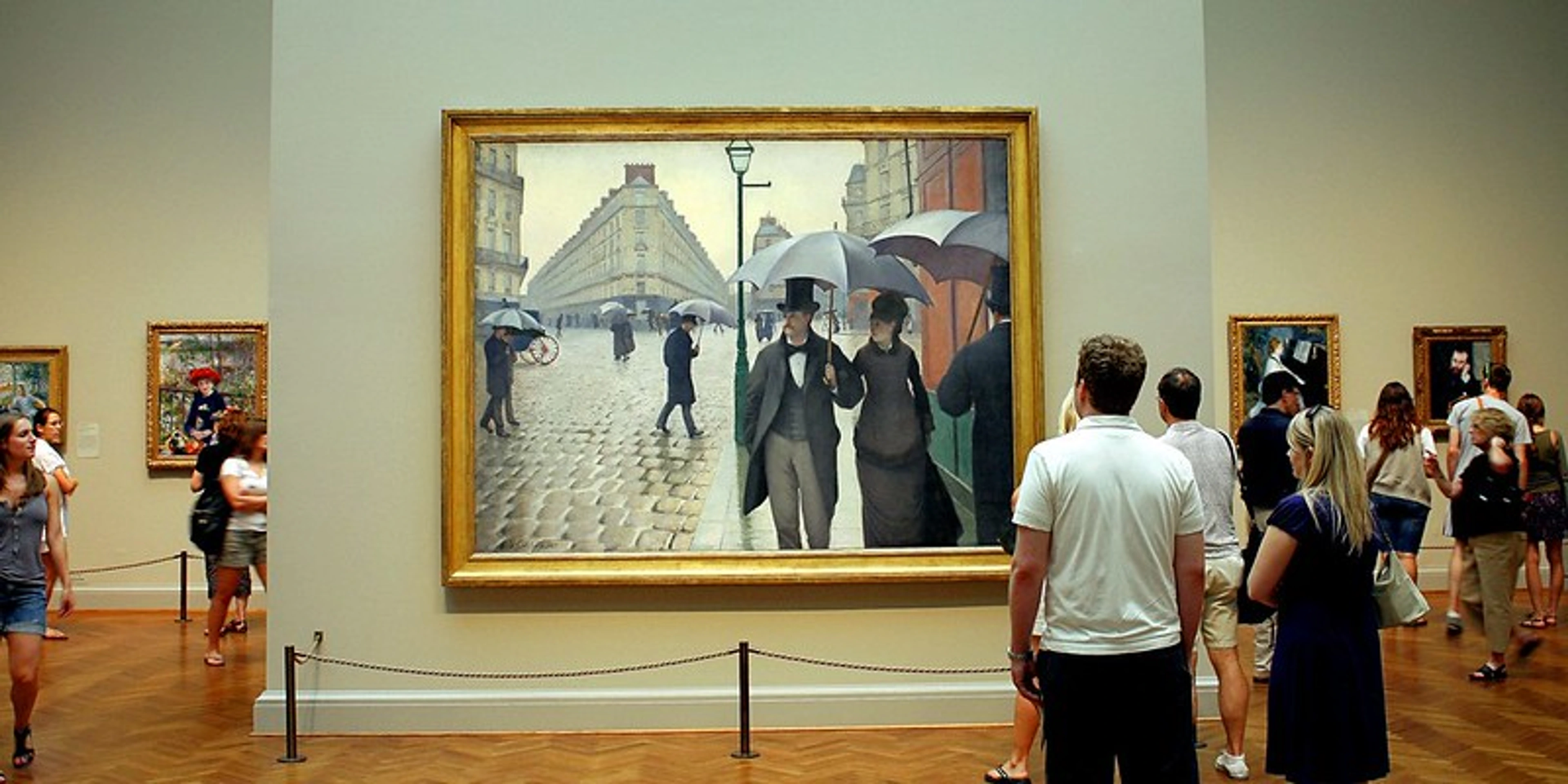
Kunst over tijd: het verkennen van momenten, geheugen en de vierde dimensie
Tijd. Het is datgene waar we altijd te weinig van hebben, proberen te besparen, wensen dat het sneller ging, of smeken om te vertragen. Het is de ultieme glibberige vis, nietwaar? Het ene moment ben je nauwgezet je week aan het plannen, het volgende is het vrijdag en vraag je je af waar het allemaal is gebleven. Als kunstenaar voelt mijn relatie met tijd nog ingewikkelder. Er is de tijd die ik besteed aan het staren naar een leeg canvas (uitstelgedrag is ook een kunstvorm, toch?), de uren die verloren gaan in de stroom van creatie, en dan de vreemde tijdelijke sprong wanneer een stuk dat ik jaren geleden maakte, plotseling voelt als gisteren. Het doet je nadenken: hoe kan kunst zelfs beginnen aan iets zo immens en abstracts als tijd? Het voelt een beetje alsof je de wind probeert te schilderen – je kunt de effecten ervan laten zien, de buigende bomen of het rimpelende water, maar de onzichtbare kracht zelf vangen? Dat is de artistieke uitdaging.
Filosofen hebben millennia lang geworsteld met tijd, vaak onderscheid makend tussen Chronos en Kairos. Chronos is de lineaire, chronologische, tik-tak tijd die we met klokken en kalenders meten – de objectieve, externe voortgang. Kairos daarentegen is kwalitatieve, subjectieve tijd – het gunstige moment, de gevoelde ervaring, de tijd die uitrekt of krimpt afhankelijk van onze gemoedstoestand. Dit is de durée waar de filosoof Henri Bergson over sprak – die gevoelde, geleefde ervaring van tijd, waarbij momenten geen discrete punten zijn, maar in elkaar overvloeien, soms slepend, soms voorbijvliegend. Denk eraan als proberen het gevoel van een lange, luie zomermiddag te vangen versus de hectische haast van een schets van vijf minuten voordat het licht verandert. Kunst worstelt vaak met dit interne, vloeibare gevoel van tijd, waardoor het onzichtbare zichtbaar wordt. Deze persoonlijke worsteling is natuurlijk niet uniek voor mij. Kijk terug door de geschiedenis van de kunst, en je zult kunstenaars vinden die met precies deze vragen worstelen, voor altijd geobsedeerd door tijd.
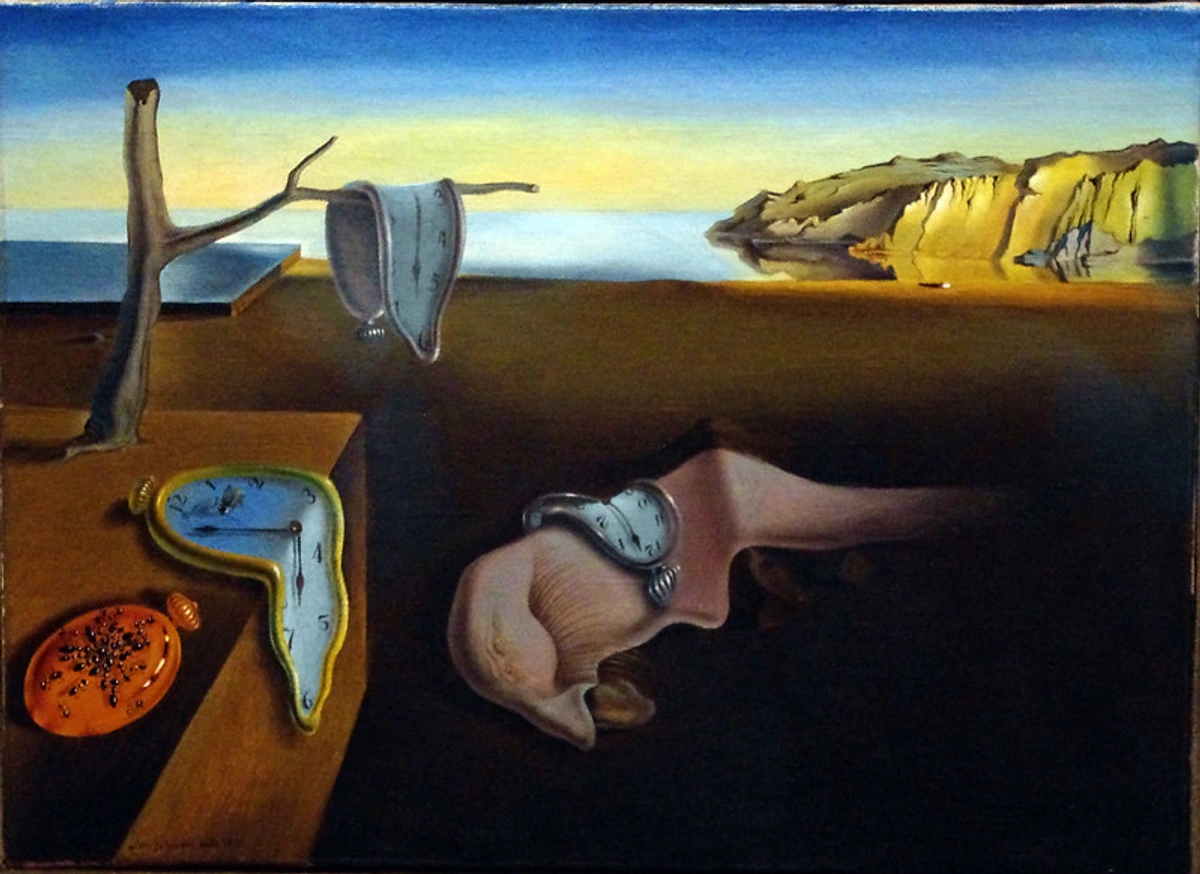
Waarom de klok schilderen? De obsessie van de kunstenaar met de grote vragen van de tijd
Dus, waarom deze artistieke fixatie? Ik denk dat het neerkomt op enkele fundamentele menselijke waarheden en angsten. We zijn ons acuut bewust van onze eigen beperkte tijd. Sterfelijkheid hangt over ons, soms als een schaduw, soms als een fel schijnwerper. Kunst wordt een manier om een spoor achter te laten, om te zeggen “Ik was hier”, om iets te creëren dat ons misschien overleeft – een vorm van erfenis. Het is een gesprek over generaties heen. Je kunt deze echo zien in mijn eigen artistieke reis, een reeks vastgelegde momenten. Soms, in de studio, voedt het bewustzijn van de tijd die verstrijkt een hectische energie; andere keren voelt het langzame, opzettelijke aanbrengen van verf als een kleine daad van verzet tegen de entropie zelf. De fysieke handeling van verf aanbrengen, lagen opbouwen, wachten tot ze drogen – het is een proces dat je dwingt te vertragen, om aanwezig te zijn in het moment, een stille rebellie tegen de onverbiddelijke voortgang van de klok. (Hoewel, laten we eerlijk zijn, soms staar ik gewoon naar het canvas en vraag me af waar het laatste uur gebleven is. Uitstelgedrag, weet je nog? Het is een temporeel vervormingsveld op zich.)
Dit bewustzijn van sterfelijkheid leidde tot hele genres, zoals Vanitas en Memento Mori schilderijen, bijzonder populair in de 16e en 17e eeuw. Deze waren niet subtiel; het waren visuele preken over de vluchtige aard van het leven en de onvermijdelijkheid van de dood. Schedels, verwelkende bloemen, uitgedoofde kaarsen, zandlopers en rottend fruit dienden als scherpe herinneringen dat tijd opraakt. Het is een directe, symbolische confrontatie met de klok, die kijkers aanspoort om na te denken over hun eigen eindige tijd.
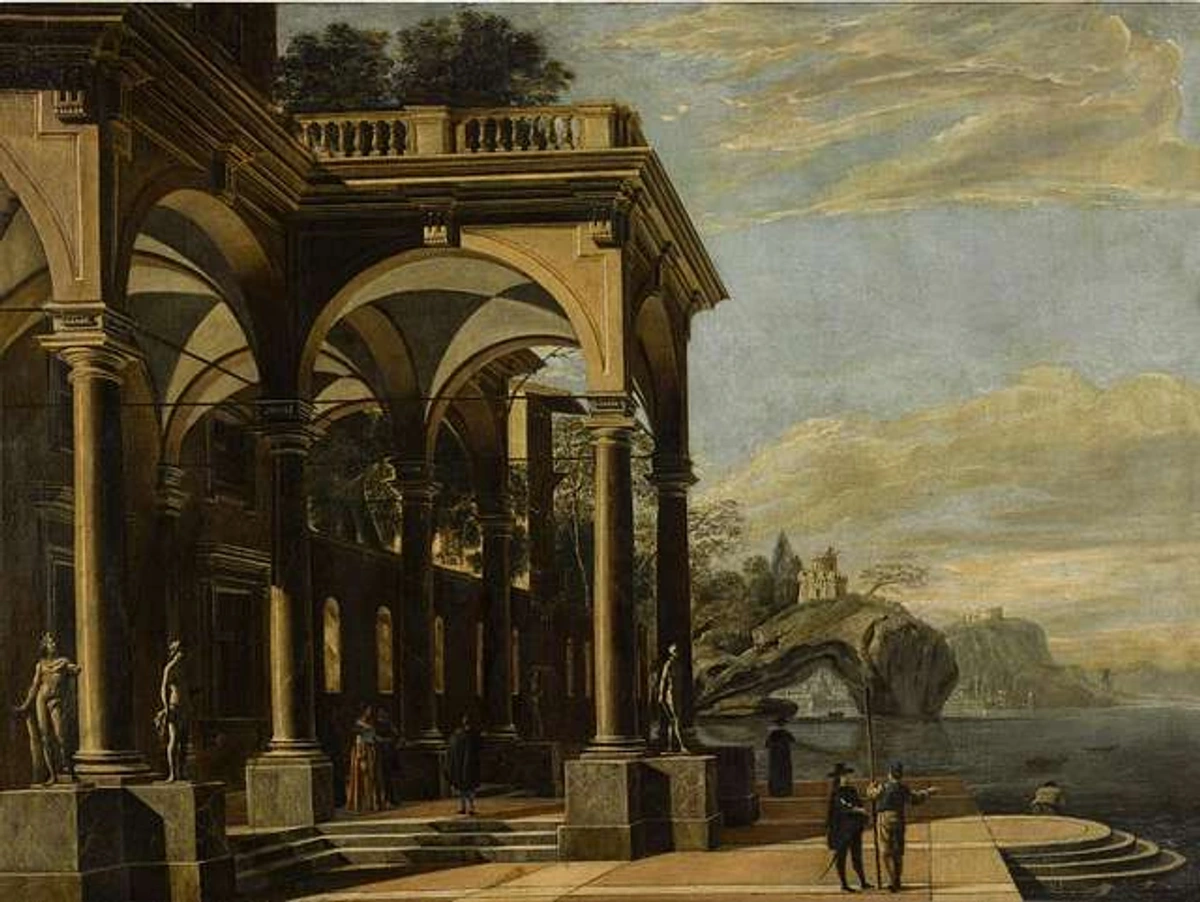
Er is ook geheugen. Tijd vormt onze herinneringen, en herinneringen vormen ons. Kunst kan een vat zijn voor nostalgie, een trigger voor herinnering, of een poging om het verleden te reconstrueren – een visueel palimpsest waar lagen van betekenis zich ophopen. Denk aan hoe een bepaalde kleur of vorm je onmiddellijk kan terugvoeren naar een specifiek gevoel of moment. Een palimpsest, oorspronkelijk een manuscriptpagina die opnieuw werd gebruikt nadat de oorspronkelijke tekst was weggeschraapt (maar vaak nog vaag zichtbaar), is hier een geweldige metafoor. Kunst kan ervaringen, geschiedenissen en interpretaties over elkaar heen leggen, waarbij het verleden altijd subtiel aanwezig is onder het oppervlak van het 'nu'. Ik herinner me dat ik probeerde het specifieke licht van een middag in mijn jeugd vast te leggen, en de worsteling was niet alleen technisch; het ging over het worstelen met de vervagende herinnering zelf, proberen het verleden zichtbaar te maken in het heden. Soms voelt een bepaalde nuance blauw of de textuur van het verfoppervlak in een van mijn abstracte stukken alsof het de echo vasthoudt van een specifieke dag of emotie van jaren geleden. Het is niet opzettelijk, maar het is er, een laag van mijn eigen temporele geschiedenis ingebed in het werk.
En dan is er verandering. Tijd betekent verandering – seizoenen verschuiven, mensen worden ouder, rijken komen op en vallen. Kunstenaars zijn vaak scherpe waarnemers van deze flux, documenteren hun wereld, geven commentaar op maatschappelijke verschuivingen (zoals in protestkunst), of verkennen de schoonheid in vergankelijkheid, zoals het Japanse concept van mono no aware – een zacht verdriet over de vluchtigheid der dingen. Dit kan het documenteren zijn van het veranderende gezicht van een stad, het vastleggen van de vluchtige schoonheid van een bloem voordat deze verwelkt, of het reflecteren op persoonlijke transformatie door de jaren heen. Het gaat erom te erkennen dat niets statisch is, en kunst kan zowel een verslag van die verandering zijn als een meditatie erop. Mijn eigen stijl is door de jaren heen drastisch veranderd; terugkijkend op vroeg werk voelt het als het zien van een ander persoon, een momentopname van een vorig artistiek zelf dat worstelde met verschillende ideeën en technieken. Die evolutie is tijd die zichtbaar wordt in mijn creatieve output.
Deze fundamentele menselijke zorgen – onze beperkte tijd, de aard van het geheugen en de onvermijdelijkheid van verandering – drijven kunstenaars om manieren te vinden om niet alleen de wereld in tijd af te beelden, maar om de tijd zelf te representeren of op te roepen. Dit leidt ons naar de fascinerende vraag hoe ze dat doen.
Het onvangbare vangen: hoe kunstenaars tijd tonen
Oké, kunstenaars willen over tijd praten, van persoonlijke angsten tot kosmische cycli. Maar hoe doen ze dat eigenlijk? Het is niet zo dat je zomaar een klok kunt schilderen (nou ja, tenzij je Dalí bent, en zelfs dan is het niet zomaar een klok – die smeltende vormen spreken direct tot de subjectieve, vloeibare durée van Kairos, niet de stijve tik-tak van Chronos). De uitdaging is het representeren van iets onzichtbaars en voortdurend bewegends. Kunstenaars gebruiken een fascinerend scala aan technieken om tijd zichtbaar, tastbaar of voelbaar te maken.
Hier zijn enkele van de belangrijkste benaderingen die kunstenaars gebruiken om met tijd om te gaan:
Benadering | Beschrijving | Voorbeelden |
|---|---|---|
| Narratieve Kunst | Het afbeelden van een opeenvolging van gebeurtenissen om de kijker door een verhaal in de tijd te leiden. | Oud-Egyptische grafschilderingen, Tapijt van Bayeux, Renaissance fresco-cycli, strips/graphic novels. |
| Bevriezen/Fragmenteren | Het vastleggen van een vluchtig moment of het tonen van meerdere standpunten/momenten binnen één statisch kader. | Impressionisme (Monet), Surrealisme (Dalí, Magritte), Futurisme (Balla, Boccioni), Kubisme (Picasso, Gris). |
| Tijd abstraheren | Gebruikmaken van visuele elementen (lijn, kleur, vorm, textuur) om het gevoel of de ervaring van tijd op te roepen. | Abstract Expressionisme (Rothko), Futurisme (Boccioni), werken gericht op ritme, snelheid, stilte of de duur van de arbeid van de kunstenaar. |
| Tijd als medium | Kunstvormen waarbij duur, verandering of proces inherent zijn aan het bestaan of de ervaring van het werk. | Performancekunst (Abramović, Hsieh), Videokunst (Viola, Marclay), Kinetische Sculptuur (Calder), Land Art (Smithson), Proceskunst, Vervalkunst. |
| Series & Typologieën | Het creëren van meerdere werken die incrementele verandering, variaties in de tijd of systematische observatie documenteren. | Hooischoven/kathedralen van Monet, industriële typologieën van Bernd & Hilla Becher, datumschilderijen van On Kawara. |
| Licht & Schaduw | Het gebruik van de weergave van licht en schaduw om het tijdstip van de dag, het verstrijken van de tijd of vluchtige momenten aan te geven. | Barokschilderkunst (Caravaggio, Rembrandt), Impressionisme (Monet), Fotografie (lange belichtingen). |
Laten we wat dieper ingaan op enkele van deze methoden.
Verhalen vertellen door de tijd heen: Narratieve kunst
Een van de oudste methoden is narratieve kunst. Denk aan oud-Egyptische grafschilderingen die de reis naar het hiernamaals tonen, of middeleeuwse wandtapijten zoals het beroemde Tapijt van Bayeux dat de Normandische verovering van Engeland gebeurtenis voor gebeurtenis afbeeldt. Deze kunstwerken leggen een reeks uit, die de kijker door de tijd leidt. Het is visuele verhalen vertellen 101, waarbij compositie en volgorde worden gebruikt om duur te impliceren. Moderne sequentiële kunst, zoals strips en graphic novels, bouwt direct voort op deze lijn, door het beheersen van het tempo van de tijd tussen panelen. Als je voor een enorm historisch schilderij of een lange rol staat, zie je het niet alleen; je leest het, je ogen bewegen over het oppervlak, ontvouwen het verhaal en ervaren het verstrijken van de tijd zoals de kunstenaar het bedoelde. Het is een temporele reis ingebouwd in de kijkervaring zelf.
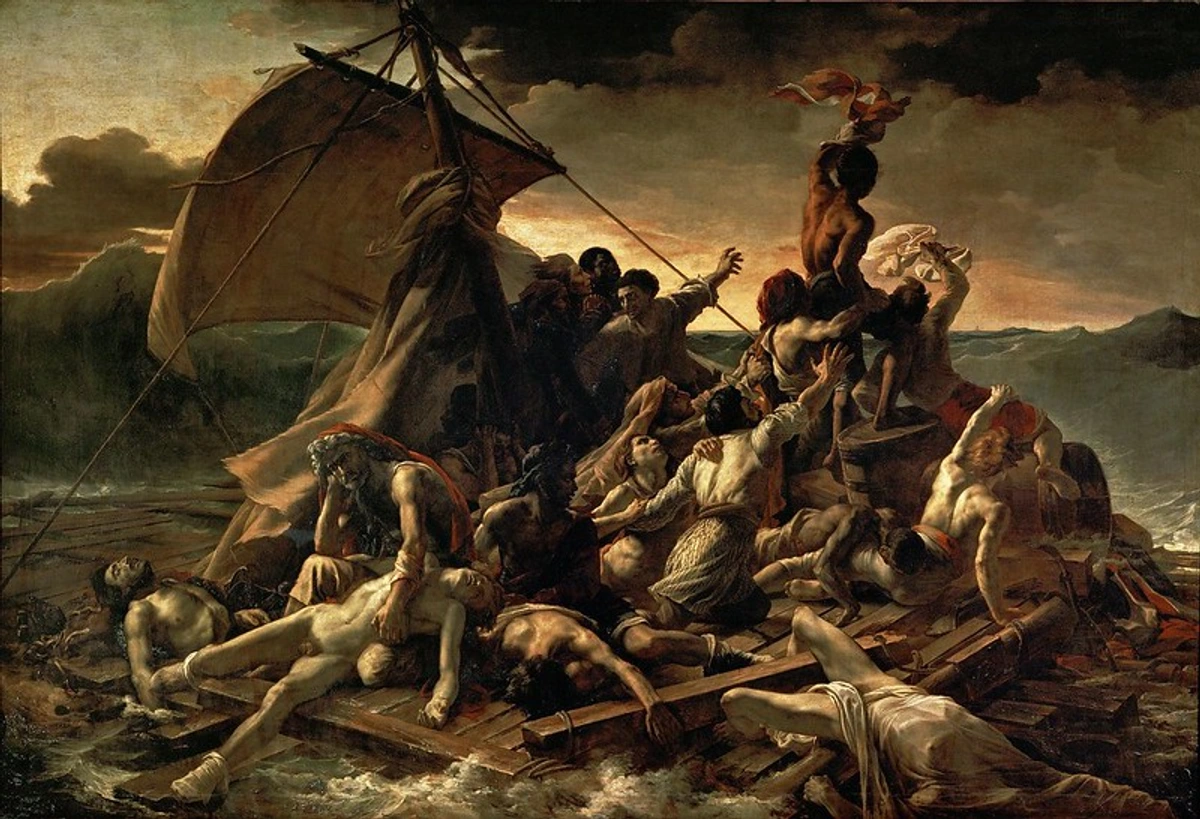
Zelfs een enkele, dramatische afbeelding kan een narratief en het verstrijken van de tijd impliceren die voorafgaat aan of volgt op het afgebeelde moment. Géricaults Het vlot van de Medusa, hoewel het een specifiek crisispunt vastlegt, is doordrenkt met de duur van de beproeving van de overlevenden en de hoop op redding, waardoor de kijker nadenkt over de tijd die ze al hebben doorstaan en de tijd die ze nog hebben. Denk ook aan historische schilderijen die belangrijke gebeurtenissen afbeelden – ze bevriezen een moment, maar worden begrepen binnen een grotere historische tijdlijn. Renaissance fresco-cycli, bijvoorbeeld, beeldden vaak het leven van een heilige of een bijbelverhaal af over meerdere scènes, waardoor de kijker de muur in de loop van de tijd moest 'lezen'.
Tijd bevriezen, vervagen en fragmenteren binnen één enkel kader
Naast het vertellen van een verhaal door de tijd heen, richtten sommige kunstenaars zich intensief op het vastleggen van het gevoel van een specifiek moment of zelfs het tonen van meerdere momenten tegelijk. De Impressionisten waren meesters in het vastleggen van het vluchtige moment – de manier waarop licht het water raakte op een bepaald uur, de drukte van een stadsstraat. Hun snelle penseelstreken gaven directheid weer, een momentopname van een vluchtig moment. Het ging niet om het vertellen van een lang verhaal, maar om het bewaren van de sensatie van nu. Proberen die specifieke kwaliteit van licht vast te leggen voordat het verandert... het is een jacht die ik goed ken in mijn eigen schilderproces, een race tegen de zon. Fotografie, met zijn vermogen om een fractie van een seconde mechanisch te bevriezen, heeft kunstenaars diepgaand beïnvloed, waardoor de schilderkunst werd gestimuleerd om de ervaring van het moment te verkennen in plaats van alleen de statische verschijning ervan. Fotografie zelf is ook geëvolueerd om tijd te manipuleren, van lange belichtingen die beweging vervagen tot time-lapse-sequenties die uren of dagen comprimeren tot seconden.
![]()
Denk aan de stille, opgeschorte momenten van Edward Hopper die zwanger zijn van onuitgesproken duur, of zelfs de intense emotie die in de tijd bevroren is in Munchs "De Schreeuw".
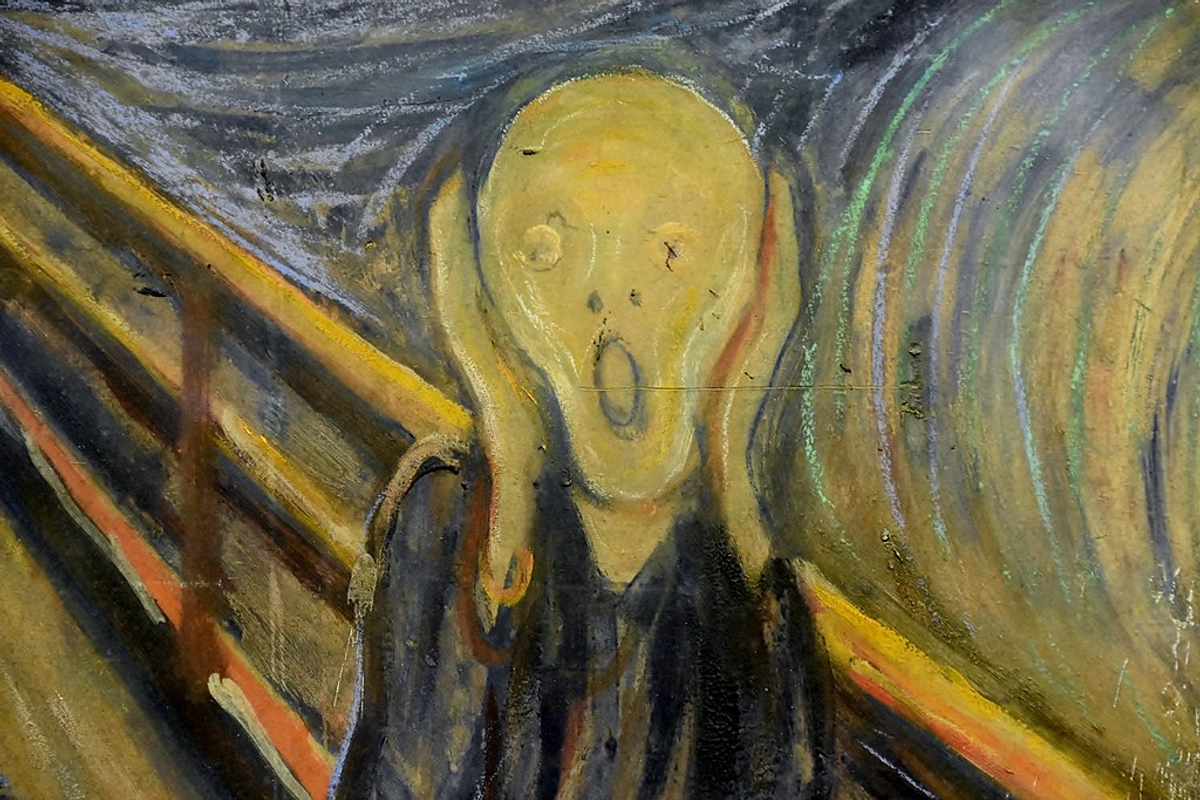
Andere bewegingen probeerden tijd binnen het kader zelf te tonen. Futurisme, bijvoorbeeld, gebruikte technieken zoals vervaging en herhaling om snelheid en beweging weer te geven, waarbij meerdere momenten van de beweging van een object tegelijkertijd werden getoond. Denk aan Giacomo Balla's Dynamiek van een hond aan de lijn of Umberto Boccioni's schilderijen en sculpturen zoals Unieke vormen van continuïteit in de ruimte die snelheid en vloeiende beweging belichamen. Kubisme fractureerde ook objecten en beeldde ze tegelijkertijd vanuit meerdere standpunten af, wat een temporele ervaring suggereert van het rondlopen van het object en het zien ervan in de loop van de tijd, alles gecomprimeerd in één enkel beeld. Het is alsof je het verleden, heden en de nabije toekomst van een object tegelijkertijd ziet, een ware visuele representatie van de vierde dimensie – tijd – geïntegreerd in een statisch tweedimensionaal vlak.
De vierde dimensie abstraheren: het gevoel van tijd oproepen
Verder verwijderd van directe representatie, pakten anderen het idee van tijd zelf aan. Dit is waar abstracte kunst vaak tussenbeide komt. Kunstenaars gebruiken elementen zoals lijn, vorm en kleur om gevoelens op te roepen die geassocieerd worden met tijd – snelheid, traagheid, ritme, chaos, stilte. Denk aan de dynamische energie in een Futuristisch schilderij zoals Umberto Boccioni's Unieke vormen van continuïteit in de ruimte, dat snelheid en de vervaging van beweging suggereert, of de meditatieve kwaliteit van een Mark Rothko kleurenveld schilderij dat de tijd lijkt op te schorten. Het gaat minder om afbeelding en meer om sensatie. Scherpe, diagonale lijnen kunnen hectische snelheid suggereren, terwijl lange, horizontale kleurvlakken kunnen aanvoelen als langzame, diepe ademhalingen. Dikke, opgebouwde verflagen kunnen de langzame accumulatie van tijd suggereren, waarbij de duur van de arbeid van de kunstenaar wordt ingebed in het fysieke oppervlak. Het ritme van herhaalde vormen of lijnen kan een visuele puls creëren die het verstrijken van de tijd nabootst. Het is een sensatie die ik vaak najaag in mijn eigen abstracte werk – proberen dat gevoel van gevangen energie of een ingehouden adem vast te leggen (je kunt hier enkele pogingen zien). Abstract Expressionisme, bijvoorbeeld, legt vaak de tijd vast van het gebaar en de emotionele staat van de kunstenaar op het moment van creatie, waardoor het proces zelf zichtbaar wordt.
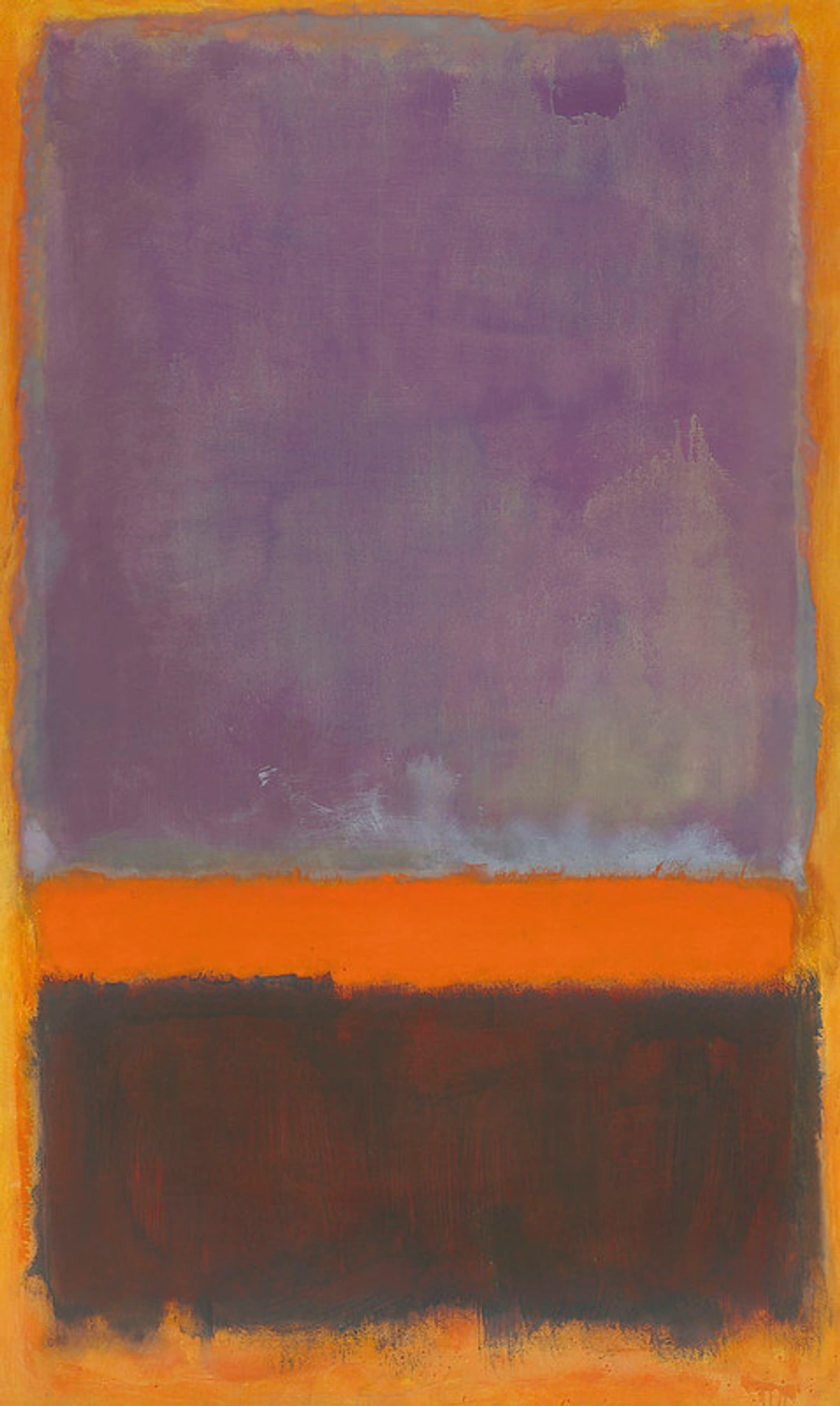
Tijd als het medium: Duur, Proces en Vergankelijkheid
Sommige kunstvormen gebruiken tijd als hun eigen canvas. Performancekunst, zoals het werk van Marina Abramović of Tehching Hsieh, ontvouwt zich over een specifieke duur. De ervaring is het verstrijken van de tijd, vaak om uithoudingsvermogen te testen of de vluchtige aard van het moment te benadrukken.
Videokunst en installatiekunst (denk aan Bill Viola's slow-motion stukken of Christian Marclays The Clock) manipuleren duur en sequentie direct, waardoor de kijker zich acuut bewust wordt van de tijd die verstrijkt of wordt veranderd. Film was natuurlijk een cruciale voorloper hier, fundamenteel gebouwd op de manipulatie van tijd door middel van montage en sequentie.
Kinetische sculpturen, zoals Alexander Calders mobiles of Janet Echelmans netsculpturen, bewegen en veranderen in de loop van de tijd, en nemen duur op in hun fysieke wezen.
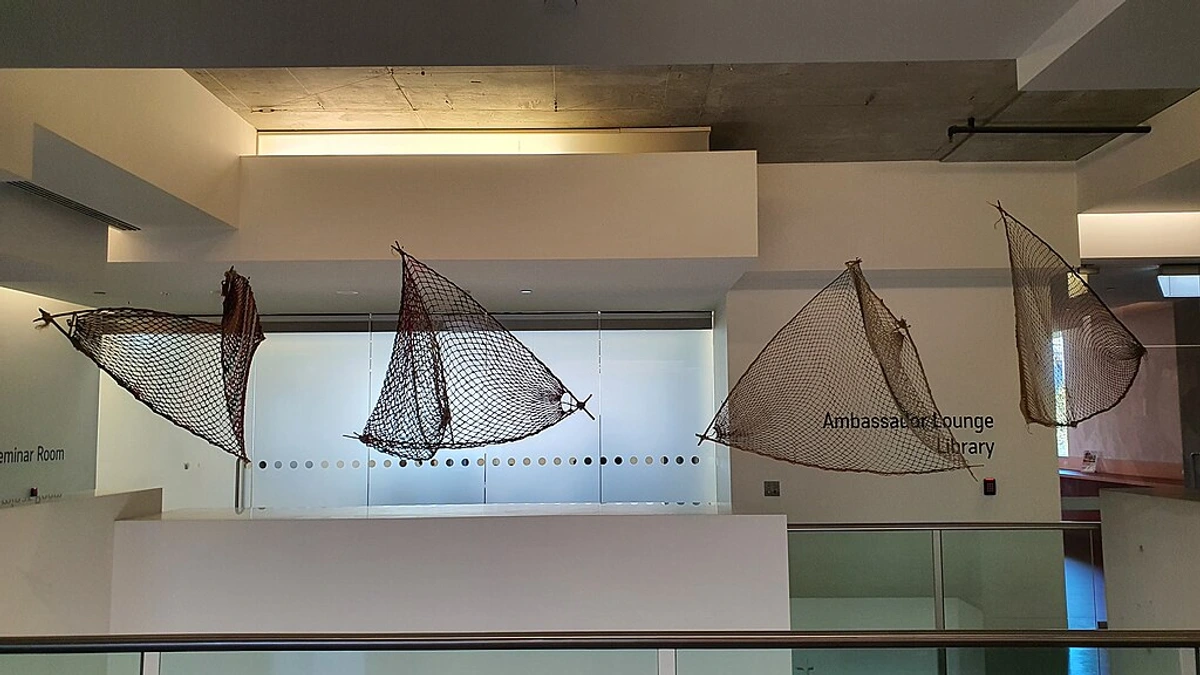
Proceskunst is een artistieke benadering waarbij de handeling van het maken en de duur ervan centraal staan. De tijd die wordt besteed aan het uitvoeren van de actie, de volgorde van stappen en de veranderingen die optreden tijdens de creatie zijn integraal voor de betekenis van het kunstwerk. De kijker wordt vaak uitgenodigd om na te denken over de tijd en arbeid die bij het maken betrokken zijn.
Sommige kunstenaars nemen zelfs verval en vergankelijkheid op als een bewust element, waardoor de fysieke transformatie van het kunstwerk in de loop van de tijd deel uitmaakt van de betekenis ervan. Dieter Roths werken met voedsel of organische materialen, of Cornelia Parker's ijssculpturen die smelten, zijn prime voorbeelden. Het kunstwerk bestaat gedurende een beperkte tijd, wat onze eigen bestaan en de meedogenloze opmars van entropie weerspiegelt. Deze focus op vergankelijkheid contrasteert scherp met het streven naar permanentie van traditionele kunst, door de destructieve kracht van tijd creatief te gebruiken.
Land art, zoals Robert Smithsons Spiral Jetty of Andy Goldsworthy's efemere werken, evolueert met de seizoenen en omgevingsveranderingen, en markeert de tijd op een geologische of natuurlijke schaal.
Zelfs digitale en internetkunst verkennen tijd door middel van duur, loops, gebruikersinteractie, real-time datafeeds en de efemere aard van online bestaan. Generatieve kunst, bijvoorbeeld, kan in de loop van de tijd evolueren op basis van algoritmen, waardoor een unieke temporele ervaring voor de kijker ontstaat. Het potentieel voor oneindige loops of real-time data-integratie biedt geheel nieuwe temporele dimensies, soms zelfs door 'real-time' datastromen op te nemen om het kunstwerk constant het huidige moment te laten weerspiegelen.
Geluidskunst houdt zich ook inherent bezig met tijd door middel van ritme, duur, sequentie en het gelaagdheid van audio-elementen, waardoor meeslepende temporele ervaringen voor de luisteraar ontstaan. Denk aan een geluidsinstallatie die subtiel verandert over uren, of een stuk gebouwd op herhalende loops die verschuiven en evolueren in de loop van de tijd. Janet Cardiff's audiowandelingen, bijvoorbeeld, leggen opgenomen geluid over de huidige omgeving van de luisteraar, waardoor een complexe temporele ervaring ontstaat.
Voor efemere kunstvormen zoals performance of tijdelijke installaties worden archieven en documentatie (fotografie, video, geschreven verslagen) cruciaal. Hoewel dit niet het kunstwerk zelf is, creëren deze records een secundaire, duurzame temporele laag, die de herinnering en context van het vluchtige stuk bewaart voor toekomstige publieken en geleerden.
Tijd in series en licht
Kunstenaars verkennen tijd ook door middel van series of meerluikwerken die incrementele verandering of variaties in de loop van de tijd documenteren. Claude Monet's series Hooischoven of de Kathedraal van Rouen, geschilderd op verschillende tijdstippen van de dag en het jaar, vangen de vluchtige effecten van licht en atmosfeer over temporele verschuivingen. Bernd en Hilla Bechers fotografische typologieën van industriële structuren documenteren variaties binnen een specifieke vorm in de loop van de tijd en plaats, waardoor een temporeel archief ontstaat. On Kawara's Today-serie, waarin hij elke dag de datum schilderde, is een directe, systematische registratie van het verstrijken van de tijd.
Een ander fundamenteel instrument is het gebruik van licht en schaduw. Kunstenaars hebben door de geschiedenis heen chiaroscuro (sterke contrasten tussen licht en donker) gebruikt om drama te creëren en vluchtige momenten te suggereren, of de veranderende kwaliteit van licht afgebeeld om het tijdstip van de dag of de overgang van dageraad naar schemering aan te geven. Denk aan de dramatische belichting in barokschilderijen van Caravaggio of Rembrandt, of de obsessie van de impressionisten met het vastleggen van het specifieke licht van een moment. Licht zelf is inherent temporeel, verandert constant, en kunstenaars gebruiken de weergave ervan om een werk te gronden in een specifieke tijd of het gevoel van tijd die verstrijkt op te roepen.
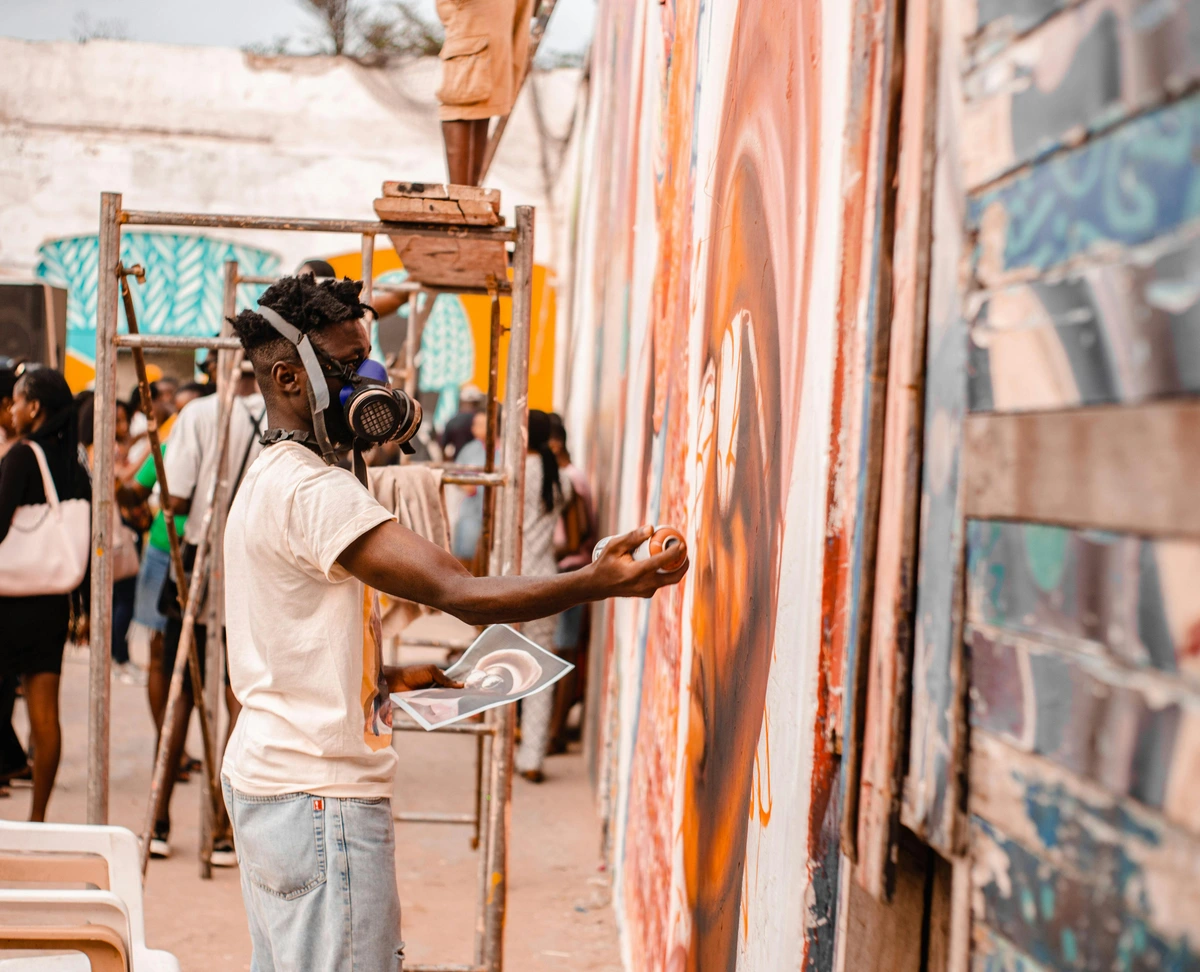
Buiten het Westen: Tijd in wereldwijde kunstperspectieven
Terwijl de Westerse traditie vaak worstelt met lineaire tijd en sterfelijkheid (soms heel expliciet, zoals bij Vanitas), hebben kunstenaars wereldwijd tijd verkend door verschillende lenzen. Deze diverse perspectieven herinneren ons eraan dat het 'probleem' van tijd in kunst niet monolithisch is; het is cultureel gevormd en eindeloos gevarieerd, broadening our understanding beyond our own temporal anxieties.
- Cyclical Time: In Hindu and Buddhist art, time is often depicted as cyclical, reflecting concepts of reincarnation and cosmic cycles. Mandalas, intricate geometric configurations, can represent the universe and the flow of time, meant for contemplation and meditation that unfolds over duration. The cycles of creation and destruction are common themes. Think of the Bhavacakra (Wheel of Life) in Tibetan Buddhism, a visual representation of the cyclical nature of existence and time.
- Narrative Scrolls: East Asian traditions, particularly in China and and Japan, utilize handscrolls (like the Admonitions Scroll attributed to Gu Kaizhi or Japanese emakimono) that unfold sequentially, guiding the viewer through a story or landscape over time, demanding a durational engagement. This is a form of visual narrative that explicitly incorporates the viewer's time, requiring physical interaction and movement through the piece.
- Dreamtime: For many Indigenous Australian cultures, the Dreamtime (or The Dreaming) is not a past era but an ever-present dimension that shapes reality and connects past, present, and future. This complex concept of time is often expressed through intricate dot paintings and other art forms used in ceremonies that bridge temporal divides, connecting the present participants to ancestral beings and events that exist outside linear time.
- Ancestral Time: Many African art forms connect the present with ancestral time, using masks and figures in rituals that bridge temporal divides and invoke the presence of spirits or forebears. The performance and use of these objects in specific temporal contexts are key to their meaning, creating a living link between the past and the present. Consider the elaborate masquerades of West Africa, where masks embody ancestral spirits and their appearance in the present is a temporal event.
- Islamic Art: While often focusing on eternal patterns and divine timelessness through geometry and calligraphy, Islamic art also incorporates temporal elements in narrative miniatures and the cyclical nature of calligraphic patterns. The intricate, repeating geometric patterns can evoke a sense of infinite, timeless order, while calligraphy often presents sacred texts that exist outside linear time.
- Mesoamerican Calendars: Ancient Mesoamerican cultures, like the Maya and Aztec, created complex calendar systems that were deeply intertwined with their art and architecture. Sculptures, codices, and monumental structures often incorporated temporal cycles, astronomical observations, and historical events, reflecting a sophisticated understanding and representation of time that was both cyclical and historical.
Exploring these diverse approaches highlights how deeply our understanding and representation of time are intertwined with cultural and philosophical beliefs. It's a reminder that my own Western-centric anxieties about linear time and mortality are just one way to slice the temporal pie. It's fascinating to see how different cultures conceptualize and visualize this fundamental dimension of existence.
The Artwork's Own Timeline: Creation, Aging, Meaning
But what happens after the paint dries? Does the artwork's relationship with time end there? Not at all. The artwork itself exists within time, undergoing its own temporal journey.
- Creation Time: Every piece takes time to make. Sometimes it’s a frantic burst of energy; other times, it’s months or years of slow, deliberate work. As an artist, I can tell you, the clock in the studio sometimes feels like it's mocking me. That process, that duration, is embedded in the final piece, even if you can't see it directly. The layers of paint hold the hours spent. The time spent staring, thinking, scraping back, adding... it's all part of the work's history. I remember one large abstract piece that took me over a year, layer by layer. Looking at it now, I don't just see the final image; I feel the time of its making, the different moods and struggles embedded in those layers. (And maybe a little bit of the frustration from those days when nothing seemed to work!)

- Lifespan & Change: Artworks age. Colors fade, materials decay (especially challenging for contemporary materials!). Conservation is a way of fighting against time's effects. Sometimes, restoration is needed to bring a piece back closer to its original state. This physical transformation over time is part of the object's history. Seeing one of my own early paintings recently, noticing how the varnish had yellowed slightly... it was a strange, tangible reminder of the years passed. It's a physical manifestation of time's passage on the object itself.
- Provenance: The history of ownership and exhibition, known as provenance, also adds a temporal layer to an artwork. Knowing where a piece has been, who has owned it, and how it has been displayed over decades or centuries contributes to its story and meaning, embedding it further within a historical timeline.
- Shifting Meanings: How we understand an artwork also changes over time. A piece that was radical once might seem tame now (Is Modern Art 'Bad'?). Historical context shifts, new interpretations arise. The dialogue between the artwork and its audience evolves across time. What did Guernica mean in 1937 versus today? And honestly, even my own relationship with pieces I made years ago changes. I look at them now and see the person I was then, the struggles I had, the ideas I was wrestling with. The artwork is the same, but my perception, shaped by my own timeline, is completely different. Consider how perceptions of works dealing with race, gender, or political events have evolved dramatically over decades or centuries, reflecting societal shifts in understanding and values. The viewer's own life journey and experiences also shape how they connect with a piece over their lifetime. Seeing a piece I first encountered as a student now, after years of my own artistic practice, reveals entirely new layers I couldn't see before. It's like the artwork waited for my own timeline to catch up.
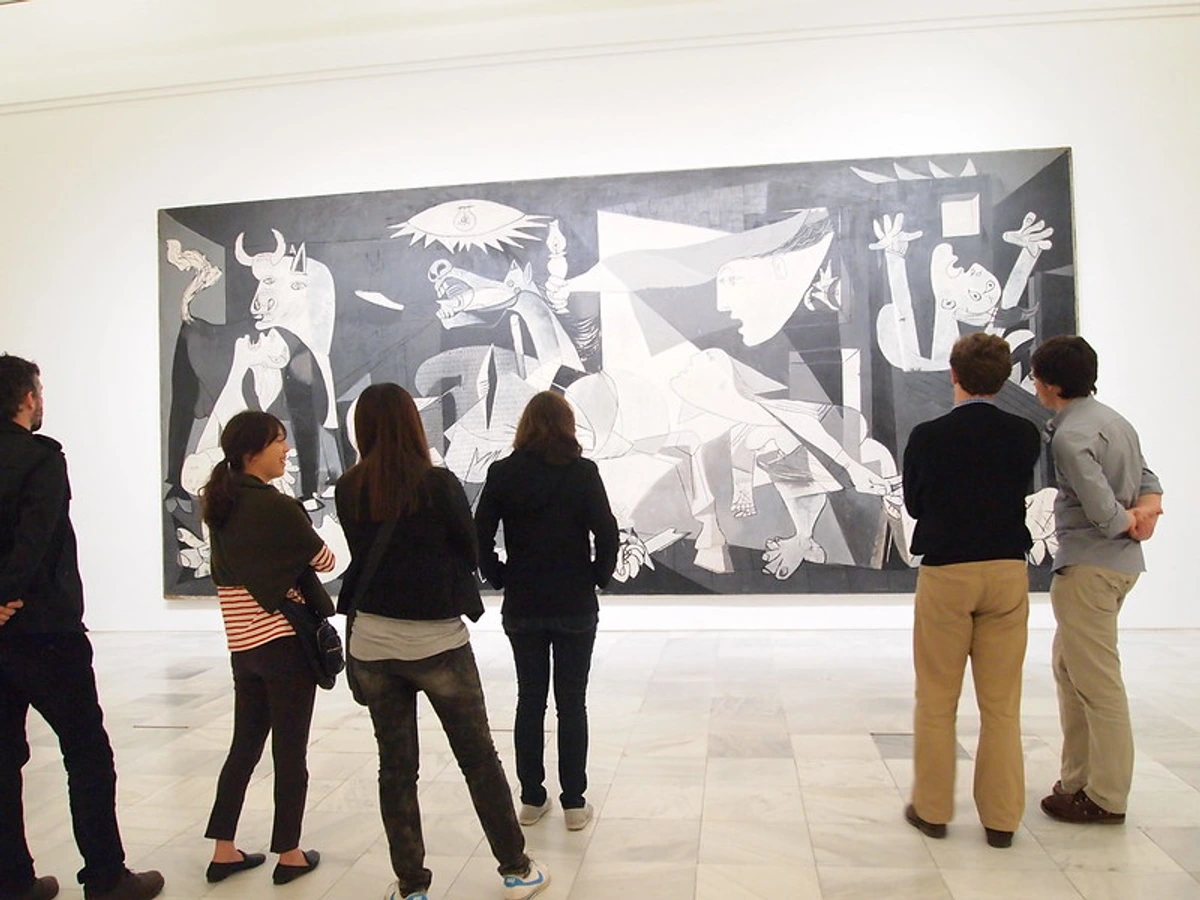
- Timelessness: Some artworks seem to transcend their original time and context, speaking to viewers across centuries. What makes a work feel 'timeless'? Often, it's a combination of universal themes (love, loss, beauty, mortality), masterful execution, and a certain enigmatic quality that allows for ongoing interpretation. A piece might capture a fleeting moment with such intensity that it feels eternally present, or explore a philosophical question that remains relevant regardless of technological or societal shifts. It's a fascinating paradox – art existing in time, yet sometimes feeling outside of it.
Losing (or Finding) Yourself in Art Time: Slow Looking and the Viewer's Experience
Have you ever stood in front of a painting in a gallery or museum and completely lost track of time? It happens to me often, sometimes even in my own little museum space. Art has this incredible ability to pull us out of the everyday rush. It can create a space for contemplation, slowing down our internal clock. The physical environment of a museum or gallery, often quiet and removed from the external world, contributes to this feeling of stepping into a different temporal zone.
This isn't just accidental; sometimes it's intentional. The concept of "slow looking" encourages viewers to spend extended time with a single artwork, resisting the urge to quickly consume and move on. Certain pieces, through their complexity, subtlety, or sheer scale, demand this durational engagement. They reward patience, allowing details and deeper meanings to emerge gradually. Think of a massive installation or a highly detailed historical painting – you need time to take it all in. Or consider a minimalist abstract piece; its subtlety might only reveal itself after minutes of quiet contemplation. For me, standing in front of a large Rothko color field painting can feel like time dissolves; the subtle shifts in color and texture demand a different kind of attention, pulling me out of my head and into the present moment of perception.
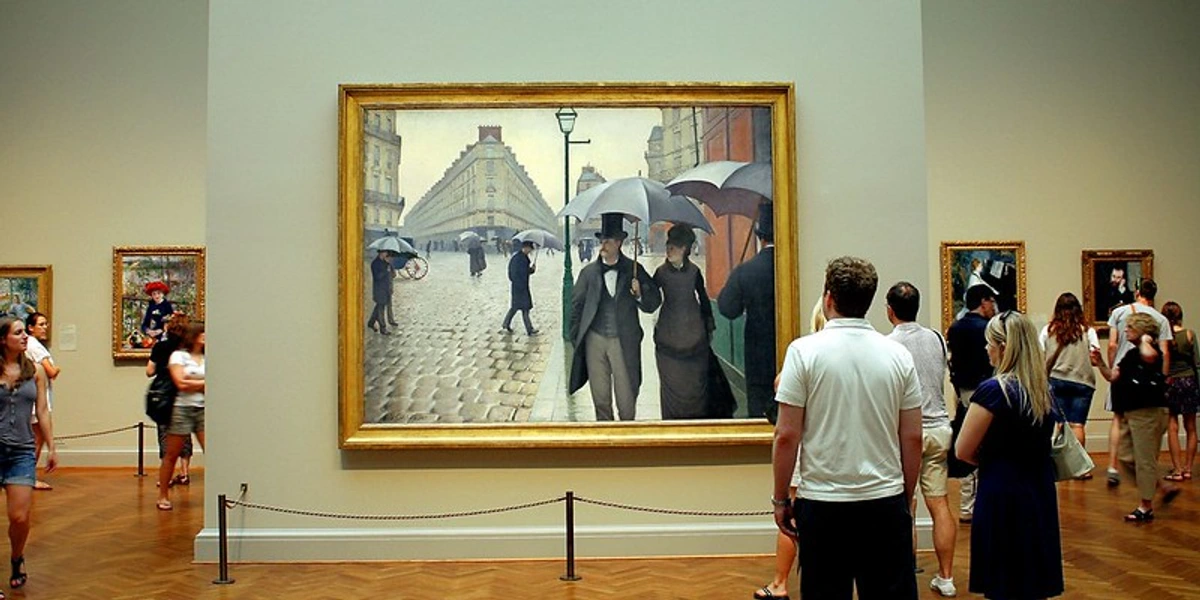
Beyond a single viewing, our relationship with an artwork can evolve over time. Seeing a piece again years later, perhaps in a different context or when you yourself have changed, can reveal new layers. The artwork remains, but your perception of it, shaped by your own life's timeline, shifts. Interactive art takes this further, where the viewer's actions and the time they invest directly influence the unfolding of the piece, making their temporal presence integral to the work itself.
Whether it's the meditative quality of an abstract piece, the intricate details of a historical work that demand close looking, or the emotional resonance that holds you captive, art offers a different kind of temporal experience. It’s a pause button, a moment of connection outside the usual tick-tock. It invites you to step into its time, or perhaps a timeless space it creates. So next time you're in a gallery, try picking just one piece and giving it ten minutes of your undivided attention. See what time reveals.
Time, Technology, and Identity: Contemporary Explorations
In our increasingly digital world, the relationship between art and time is constantly evolving. Contemporary artists are using new technologies to explore temporal concepts in ways previously unimaginable.
- Digital Duration: Video art, already mentioned, continues to push boundaries, with artists creating immersive installations that manipulate time through extreme slow motion, loops, or real-time feeds. Christian Marclay's The Clock is a prime example, synchronizing film clips to create a 24-hour real-time experience of cinematic time.
- Generative Art: Art created by algorithms can evolve over time, presenting a dynamic, non-static artwork whose form is shaped by code and potentially real-time data. This introduces a new layer of temporality, where the artwork is not a fixed object but a process unfolding over time. Some generative pieces even incorporate live data feeds (like weather patterns or stock market fluctuations) to make the artwork a direct, real-time reflection of the present moment.
- Interactive and VR Art: These forms often require the viewer's active participation over a specific duration. The artwork's experience is directly tied to the time the viewer spends interacting with it, and their actions can influence its temporal unfolding. Virtual reality can create entirely new temporal environments, allowing artists to build worlds where time behaves differently – speeding up, slowing down, or looping.
- NFTs and Blockchain: The emergence of NFTs (Non-Fungible Tokens) and blockchain technology introduces new ways to think about the timeline and ownership history of digital art. The blockchain creates a permanent, timestamped record of creation and transactions, establishing a unique provenance for digital works that previously existed in a more ephemeral state. It's a digital timestamp, anchoring the artwork to a specific moment in its digital history.
- Time and Identity in the Digital Age: How do our online identities, shaped by fragmented moments and constant updates, relate to our sense of self over time? Artists are exploring themes of digital memory, online presence as a form of temporal existence, and the blurring lines between past and present in the age of instant recall and perpetual archiving. Social media feeds, for instance, create a constantly updating, fragmented timeline of self that artists are dissecting and recontextualizing.
These contemporary approaches demonstrate that the artistic conversation about time is far from over. As our experience of time is shaped by technology and societal changes, artists will continue to find new ways to reflect, question, and capture this fundamental dimension of existence.
Key Artists and Works Exploring Time
While countless artists touch on time, some have made it a central theme. Here are just a few notable examples, many of whom you can find discussed in more detail in other articles:
- Salvador Dalí: Famous for The Persistence of Memory (1931) and its melting clocks, exploring subjective time and the subconscious.
- Claude Monet: Master Impressionist focused on capturing fleeting moments of light and atmosphere (e.g., Impression, Sunrise, Rouen Cathedral series).
- Umberto Boccioni: Leading Futurist sculptor and painter aiming to depict speed and dynamism (e.g., Unique Forms of Continuity in Space).
- Marina Abramović: Pioneer of performance art, using duration and endurance as core elements (e.g., The Artist is Present). Find out more in the Ultimate Guide to Marina Abramović.
- On Kawara: Conceptual artist whose Today series meticulously documented the date each painting was made, marking the passage of days.
- Hiroshi Sugimoto: Photographer known for long-exposure works, like his Theaters series, capturing the entire duration of a film in a single white screen.
- Christian Marclay: Creator of The Clock (2010), a 24-hour video montage using film clips featuring clocks or references to time, synchronized with real-time.
- Bill Viola: Video artist often using extreme slow motion to explore emotional and spiritual states, stretching moments into near-eternity.
- Roman Opalka: Painter who spent decades painting consecutive numbers (1 to infinity) on canvas, a profound meditation on time and existence.
- Andy Goldsworthy: Land artist creating ephemeral works using natural materials, documenting their creation and decay over time.
- Dieter Roth: Artist known for using organic materials that decay over time, making the process of decomposition part of the artwork.
- Bruce Nauman: Explored duration and repetition in video and performance art.
- Tehching Hsieh: Known for his year-long performance pieces that rigorously documented the passage of time and the artist's existence within it.
- Janet Echelman: Creates large-scale net sculptures that respond to wind and light, constantly changing over time and interacting with the environment.
- Trevor Paglen: Explores themes of surveillance and data, often visualizing the invisible flows of information and power that operate across time and space.
- Janet Cardiff: Known for her 'audio walks' which create a layered temporal experience for the listener, blending the present environment with recorded sound and narrative from another time.
- Bernd and Hilla Becher: Photographers known for their systematic typologies of industrial buildings, documenting architectural forms and their changes over time through rigorous, repetitive observation.
This is just a starting point! Many artists across different genres and movements engage with time. Exploring their work is a great way to see these concepts in action. You can find many of these artists represented in museums worldwide or art galleries. And don't forget to look for contemporary artists who might be exploring time through new media, performance, or installation in smaller, experimental galleries or media art centers!
So, What's the Time?
Art doesn't give us a definitive answer about time. It can't stop the clock or turn it back. But what it can do is offer infinite ways to reflect on it, feel it, question it, and maybe even make peace with it. It holds moments, tells stories, evokes memories, confronts mortality, and reminds us of both the fleeting nature of our existence and the potential for ideas and beauty to endure.
From ancient Egyptian journeys to the afterlife to Dalí's melting clocks, from Monet's fleeting light to Abramović's durational performances, artists keep trying to grasp this slippery concept. And maybe the attempt itself, the ongoing conversation across canvases, screens, and centuries, is the most timeless thing of all. Now, if you'll excuse me, I think I hear my easel calling... or maybe that's just the deadline reminding me time's up. (Seriously, where did the last hour go?)
Frequently Asked Questions (FAQ) About Art and Time
Q1: What art movements specifically focused on time and motion?
A: Futurism (early 20th century) was explicitly obsessed with speed, technology, and the dynamism of modern life, aiming to depict motion and the passage of time, often showing multiple moments simultaneously. Kinetic Art, emerging later, incorporates actual physical movement, making time a literal component. Performance Art and Video Art inherently use duration as a key element.
Q2: How does photography capture time differently than painting?
A: Photography inherently freezes a specific fraction of a second, offering a direct, mechanical record of a moment. Painting, even when depicting a moment, involves the artist's interpretation, memory, and the time taken to create the image, often resulting in a more subjective or synthesized representation of time. Painting can also depict multiple moments or the feeling of time passing within a single frame, which traditional photography typically cannot do without manipulation. Modern photography techniques like long exposures or time-lapse sequences, however, explicitly engage with duration.
Q3: Can abstract art really be 'about' time?
A: Absolutely. While not depicting clocks or calendars, [abstract art](/finder/page/famous abstract art) uses elements like rhythm, speed of brushstrokes, layering, color relationships (like in Abstract Expressionism), and composition to evoke feelings and concepts related to time, such as duration, energy, stillness, or chaos. It's about the experience or feeling of time rather than its literal representation.
Q4: Are there famous artworks specifically about memory?
A: Yes, many! Surrealist works often delve into the subconscious and memory (think Dalí again, or René Magritte). Conceptual artists like Christian Boltanski use installations and photographs to explore collective and personal memory. Even portraits or landscapes can be deeply imbued with memory and nostalgia for the artist or viewer. The concept of the visual palimpsest is very relevant here.
Q5: How does the concept of time affect the value of art?
A: Time plays a complex role. The age of an artwork (historical significance), the period it represents within an artist's career (see artist timelines like mine), its condition over time (art care is key!), and how perceptions of the artist or movement change over time all influence art prices and value. The time invested in creation can also be a factor, though often less direct than market trends or provenance.
Q6: How does time affect the materials artists use?
A: Artists must consider the longevity of their materials. Traditional mediums like oil paint on canvas or stone sculpture have proven durability. However, many contemporary artists use ephemeral materials (like food, plants, or digital media) intentionally, making the artwork's decay or obsolescence part of its concept. Conservation science constantly evolves to address the challenges of preserving diverse materials over time.
Q7: Are there artists who explore cyclical time rather than linear time?
A: Yes, particularly artists drawing from non-Western philosophies or spiritual traditions (like Hinduism or Buddhism) often explore cyclical themes. Land artists whose work changes with the seasons (like Andy Goldsworthy) also engage with natural cycles. Some conceptual or performance artists might create works that loop or repeat, challenging linear progression.
Q8: How is time represented in digital or new media art?
A: Digital art offers unique ways to explore time. This includes interactive works where the viewer's engagement unfolds the piece over time, generative art that evolves according to algorithms, video installations manipulating duration (like slow-motion or time-lapse), net art dealing with the speed and ephemerality of information, and works exploring digital decay or obsolescence. The potential for infinite loops or real-time data integration also offers new temporal dimensions.
Q9: What is 'slow looking' in art?
A: Slow looking is a practice that encourages viewers to spend an extended period of time with a single artwork, moving beyond a quick glance to observe details, consider the artist's choices, and allow for deeper engagement and personal reflection. It's a conscious effort to resist the fast pace of modern life and experience art more fully over time.
Q10: How can I find art that explores themes of time?
A: You can explore art galleries and museums worldwide, looking for works by the artists mentioned in this article or movements like Futurism, Impressionism, or Conceptual Art. Many contemporary artists also engage with time through performance, video, or installation. Online databases and art history resources can also help you search for specific themes or artists. And of course, abstract art, like some of my own pieces (available here), often aims to evoke feelings and sensations that relate to the experience of time, speed, or stillness.
Q11: How do ephemerality and permanence relate to time in art?
A: Ephemeral art forms (like performance, temporary installations, or works using decaying materials) embrace the transient nature of time, existing only for a limited duration. This contrasts with traditional, more permanent mediums like painting or sculpture, which aim to endure through time. Both approaches use time – either its fleetingness or its potential for longevity – as a core element of their meaning.
Q12: What is Process Art and how does it relate to time?
A: Process Art is an artistic movement where the process of making the art is considered as important, or more important, than the finished product. Time is crucial here because the duration of the actions, the sequence of steps, and the changes that occur during the creation process are integral to the artwork's meaning. The viewer is often invited to consider the time and labor involved in the making.
Q13: How do artists explore the relationship between time and identity?
A: Artists explore this through various means, including self-portraits that document aging, works that incorporate personal history and memory, pieces that reflect on cultural or collective memory, and contemporary art that examines digital identity and its temporal nature. Performance art, in particular, can use the artist's body and endurance over time to explore themes of personal transformation and identity.
Q14: Are there museums or galleries particularly known for showcasing art related to time?
A: While not exclusively dedicated to the theme of time, institutions focusing on modern and contemporary art often have strong collections of works that engage with temporal concepts, particularly in areas like video art, performance documentation, and installation. Look for museums with strong media art departments, performance art archives, or those known for experimental installations. Institutions like the Tate Modern, MoMA, or the Centre Pompidou are good places to start, as are smaller, experimental galleries and media art centers!
Q15: How does Sound Art engage with time?
A: Sound Art inherently deals with time through its very nature. It uses elements like duration, rhythm, sequence, layering of sounds, and silence to create temporal experiences for the listener. Sound installations can unfold over long periods, audio walks blend present time with recorded past narratives, and pieces built on loops or evolving algorithms create unique temporal structures.
Q16: How does architecture relate to time in art?
A: Architecture interageert met tijd op meerdere manieren. Gebouwen zijn fysieke objecten die de tijd doorstaan, onderhevig aan veroudering en verandering. Hun ontwerp kan de temporele context van hun creatie weerspiegelen (historische stijlen). Bovendien is de ervaring van het bewegen door architectonische ruimte inherent temporeel, ontvouwend over duur. Sommige architectonische installaties of tijdelijke structuren houden zich ook bezig met tijd door hun beperkte levensduur of interactie met natuurlijke cycli (zoals licht dat gedurende de dag verandert).
V17: Wat is herkomst in kunst en hoe verhoudt het zich tot tijd?
A: Herkomst is de gedocumenteerde geschiedenis van eigendom en locatie van een kunstwerk. Het creëert een tijdlijn voor het object, waarbij de reis door de tijd van creatie tot heden wordt getraceerd. Deze geschiedenis voegt lagen van betekenis en context toe aan het kunstwerk en is cruciaal voor authenticatie en waardebepaling.
V18: Hoe verhouden NFT's en blockchain-technologie zich tot tijd in digitale kunst?
A: NFT's (Non-Fungible Tokens) en blockchain-technologie bieden een tijdgestempeld, onveranderlijk record van eigendom en transactiegeschiedenis voor digitale activa. Voor digitale kunst, die anders gemakkelijk kan worden gekopieerd en een traditionele fysieke herkomst mist, creëert de blockchain een verifieerbare tijdlijn en geschiedenis, waardoor een vorm van digitale herkomst ontstaat die de reis van het kunstwerk door de tijd op het digitale grootboek volgt.
V19: Hoe gebruiken kunstenaars licht om tijd weer te geven?
A: Kunstenaars gebruiken licht om tijd weer te geven door de veranderende kwaliteit van natuurlijk licht gedurende de dag of seizoenen af te beelden (bijv. impressionisme), dramatische contrasten (chiaroscuro) te gebruiken om vluchtige momenten te suggereren, of technieken zoals lange belichting fotografie toe te passen om het verstrijken van de tijd vast te leggen door middel van vervaagde lichtsporen.
V20: Wat zijn kunstseries of typologieën en hoe verhouden ze zich tot tijd?
A: Kunstseries of typologieën omvatten het creëren van meerdere gerelateerde werken die een onderwerp verkennen door herhaling of incrementele verandering. Deze benadering houdt zich inherent bezig met tijd door variaties over een periode te documenteren, evolutie te tonen of een temporeel archief te creëren door middel van systematische observatie, zoals Monets series van hetzelfde onderwerp onder verschillende lichtomstandigheden of de fotografische typologieën van de Bechers.




